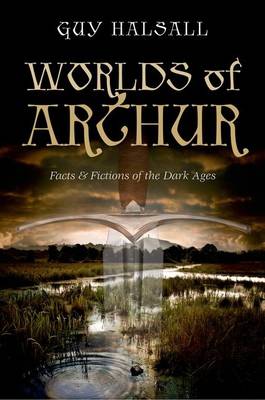
Nos liseuses Vivlio rencontrent actuellement des problèmes de synchronisation. Nous faisons tout notre possible pour résoudre ce problème le plus rapidement possible. Toutes nos excuses pour la gêne occasionnée !
- Retrait gratuit dans votre magasin Club
- 7.000.000 titres dans notre catalogue
- Payer en toute sécurité
- Toujours un magasin près de chez vous
Nos liseuses Vivlio rencontrent actuellement des problèmes de synchronisation. Nous faisons tout notre possible pour résoudre ce problème le plus rapidement possible. Toutes nos excuses pour la gêne occasionnée !
- Retrait gratuit dans votre magasin Club
- 7.000.0000 titres dans notre catalogue
- Payer en toute sécurité
- Toujours un magasin près de chez vous
30,45 €
+ 60 points
Format
Description
King Arthur is probably the most famous and certainly the most legendary medieval king. From the early ninth century through the middle ages, to the Arthurian romances of Victorian times, the tales of this legendary figure have blossomed and multiplied. And in more recent times, there has been a continuous stream of books claiming to unlock the secret or the truth behind the "once and future king." The truth, as Guy Halsall reveals in this fascinating investigation, is both radically different--and also a good deal more intriguing. Broadly speaking, there are two Arthurs. On the one hand is the traditional "historical" Arthur, waging a doomed struggle to save Roman civilization against the relentless Anglo-Saxon tide during the darkest years of the Dark Ages. On the other is the Arthur of myth and legend, accompanied by a host of equally legendary people, places, and stories: Lancelot, Guinevere, Galahad and Gawain, Merlin, Excalibur, the Lady in the Lake, the Sword in the Stone, Camelot, and the Round Table. The big problem with all this, notes Halsall, is that "King Arthur" might well never have existed. And if he did exist, it is next to impossible to say anything at all about him. As this challenging new look at the Arthur legend makes clear, all books claiming to reveal "the truth" behind King Arthur can safely be ignored. Not only the fanciful pseudo-historical accounts--Merlin the Magician, the Lady in the Lake--but even the "historical" Arthur is largely a figment of the imagination. The evidence that we have, whether written or archeological, is simply incapable of telling us anything detailed about the Britain in which he is supposed to have lived, fought, and died.
Spécifications
Parties prenantes
- Auteur(s) :
- Editeur:
Contenu
- Nombre de pages :
- 378
- Langue:
- Anglais
Caractéristiques
- EAN:
- 9780199658176
- Date de parution :
- 01-03-13
- Format:
- Livre relié
- Format numérique:
- Genaaid
- Dimensions :
- 152 mm x 234 mm
- Poids :
- 725 g







